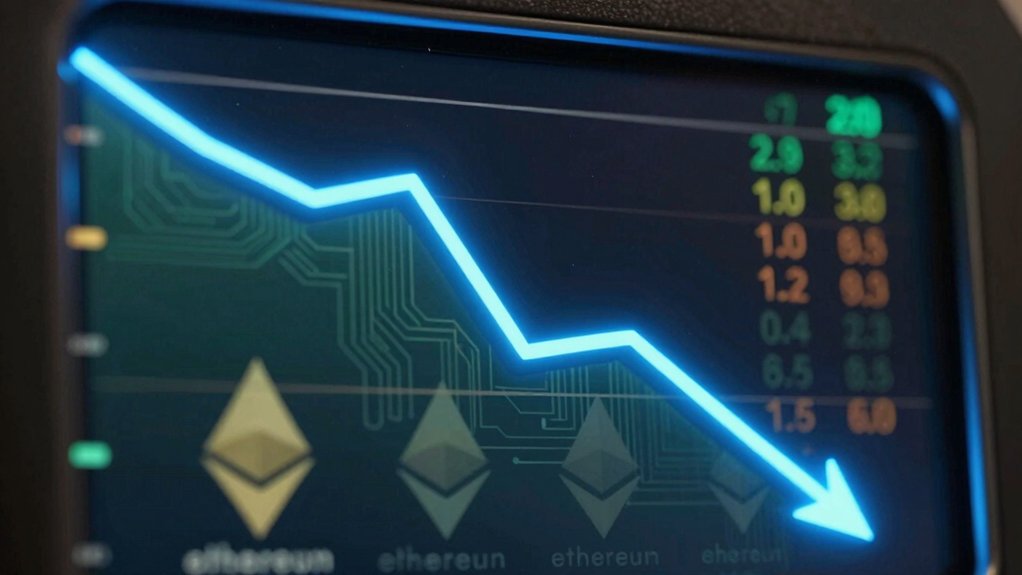Cryptocurrency staking offers a modern alternative to traditional mining, allowing holders to earn passive income by locking their digital assets. Like a high-tech savings account, staking lets investors participate in blockchain validation while collecting rewards ranging from 3% to 20% annually. Through various options – from direct staking to pooled arrangements – participants contribute to network security while their assets work for them. This evolving ecosystem presents both opportunities and challenges for those ready to explore its depths.

As cryptocurrency continues reshaping the financial landscape, staking has emerged as a compelling alternative to the energy-hungry mining operations of yesterday. Like a garden that rewards patient tending, staking allows crypto holders to earn passive income by participating in blockchain networks' security and validation processes. Through this elegant mechanism, users lock their digital assets in specialized wallets or smart contracts, fundamentally becoming virtual sentinels of the network. Popular platforms like Binance and Coinbase offer easy entry points for beginners.
Staking transforms crypto holders into digital gardeners, nurturing blockchain networks while harvesting steady returns from their carefully invested assets.
The process operates on a Proof of Stake consensus, where validators are chosen based on the size of their stake, much like shareholders in a traditional company. Those who commit more tokens naturally gain more opportunities to validate transactions and earn rewards, with annual yields ranging from a modest 3% to an enticing 20% or higher. The beauty of this system lies in its accessibility – while some networks like Ethereum require substantial minimum stakes of 32 ETH, others like Cardano welcome participants with any amount. Liquid staking tokens enable participants to maintain flexibility while earning rewards. The rise of smart contracts on platforms like Ethereum has made these staking mechanisms more efficient and transparent.
Staking comes in various flavors to suit different appetites for involvement. Direct stakers run their own validator nodes, taking full control but assuming greater responsibility. Those seeking a more hands-off approach can delegate their stakes to established validators or join staking pools, sharing both rewards and risks with fellow participants. Exchanges have also joined the party, offering convenient but somewhat centralized staking services.
However, this digital garden isn't without its thorns. Validators face slashing penalties for misconduct, potentially losing significant portions of their stake. Lock-up periods can feel like digital handcuffs during market volatility, and smart contract vulnerabilities lurk like hidden trapdoors. The regulatory landscape remains as unpredictable as spring weather, adding another layer of uncertainty.
Despite these challenges, staking represents a significant evolution in how blockchain networks maintain security and distribute rewards. For those willing to navigate its complexities, it offers a more sustainable and accessible path to participate in the crypto ecosystem than its energy-intensive predecessor, mining.
As the technology matures and platforms evolve, staking continues to bloom into an increasingly crucial component of the digital asset landscape.
Frequently Asked Questions
What Happens to Staked Crypto if the Blockchain Network Experiences Technical Issues?
During blockchain technical issues, staked assets remain locked but secure. Network downtime pauses rewards temporarily, while validators cannot process blocks. Recovery mechanisms and governance systems help restore normal operations after disruptions.
Can I Stake Cryptocurrencies Directly From My Hardware Wallet?
Yes, many hardware wallets support direct cryptocurrency staking. Popular devices like Ledger and Trezor allow users to stake various coins including ETH, ADA, SOL, and DOT while maintaining secure control of assets.
How Do Taxes Work on Staking Rewards in Different Countries?
Tax treatment of staking rewards varies considerably by country. The US taxes as ordinary income, Germany offers tax-free status after 1 year, while places like Singapore exempt individuals but tax businesses.
What Factors Affect the Fluctuation of Staking Reward Rates?
Staking reward rates fluctuate based on network participation levels, token inflation rates, market conditions, transaction volumes, validator performance, and protocol design changes. These factors collectively influence the overall yield distribution among participants.
Is There Insurance Protection for Staked Cryptocurrencies?
Yes, various insurance options exist for staked cryptocurrencies, including slashing protection, smart contract coverage, and custodial insurance. Major providers like Nexus Mutual and Chainproof offer specialized policies for different staking risks.









